Electronics News
Hackernoon
341
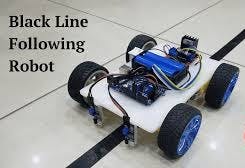
Image Credit: Hackernoon
Turn Your Raspberry Pi Pico into a Robot That Obeys Lines Like a Pro
- The article demonstrates how to turn a Raspberry Pi Pico into a line-following robot using various components.
- A line follower robot is described as an autonomous robot that can track and follow a line on the floor, typically a black line.
- Components required include Raspberry Pi Pico, IR sensor array, L298N motor driver, motors, wheels, caster wheel, LiPo battery, wires, and a computer.
- The software part involves installing Thonny IDE, flashing the Pico with Micropython Firmware, and setting up Thonny for programming.
- The article provides MicroPython code for motor control, sensor reading, PID control, smart search function, and the main loop for the line follower robot.
- Hardware part includes connections between Raspberry Pi Pico, L298N, and the IR sensor array for the line follower.
- IR sensor calibration steps are provided to ensure the accurate functioning of the line follower robot.
- A test run video link is shared for reference, showcasing the working model of the line-following robot.
- The project concludes with thanks and the author's name, Shivank Dan.
Read Full Article
20 Likes
Knowridge
428
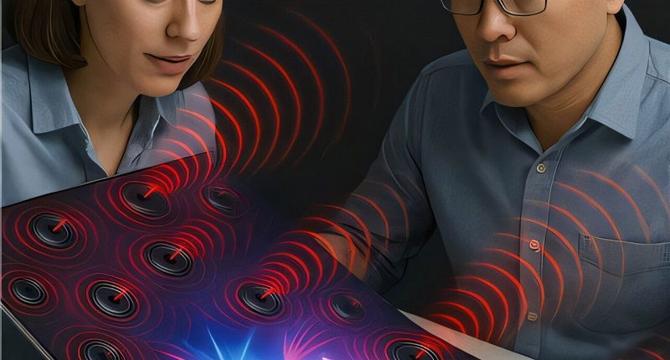
Image Credit: Knowridge
Screens that talk: New OLED display plays different sounds from every pixel
- Researchers at POSTECH in South Korea have developed the world’s first display that can produce different sounds from each individual pixel.
- They created a new kind of OLED screen that integrates sound directly from the display itself, eliminating the need for separate sound systems.
- The display uses ultra-thin sound units called piezoelectric exciters inside the screen's frame to turn each pixel into its own speaker.
- This breakthrough technology has various applications, such as personalized audio experiences in cars, virtual reality headsets, and smartphones, enhancing the overall user experience.
Read Full Article
25 Likes
Knowridge
86

Image Credit: Knowridge
Tiny tech could bring super-fast 6G and sci-fi dreams to life
- Scientists at the University of Bristol have made a breakthrough in semiconductor technology, paving the way for super-fast 6G networks.
- 6G networks are expected to be faster and more powerful than 5G, enabling instant data sharing globally for applications like remote medical care and smarter driverless cars.
- The team developed a new type of radio frequency amplifier using a latch effect, improving signal efficiency. These amplifiers are made from gallium nitride and have more than 1,000 tiny fins to boost current.
- Testing showed that the new technology is durable and can further increase power. Researchers aim to integrate this technology into real-world products with the potential to fulfill science fiction dreams through 6G technology.
Read Full Article
5 Likes
Knowridge
13

Image Credit: Knowridge
New intercrystals could power greener electronics and future quantum devices
- Scientists at Rutgers University have discovered a new type of material, intercrystals, that could revolutionize electronics and quantum devices.
- Intercrystals are created by layering graphene sheets and hexagonal boron nitride, causing a small change in structure with significant effects on electron behavior.
- These intercrystals exhibit unique properties like magnetism and superconductivity, allowing for the design of new electronic functions through twistronics.
- Using common elements like carbon, boron, and nitrogen, intercrystals may lead to greener and more sustainable electronics with applications in energy-efficient devices and quantum computing.
Read Full Article
Like
Knowridge
451
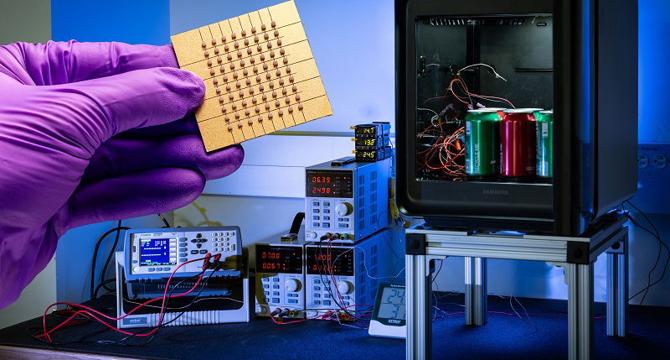
Image Credit: Knowridge
How nano cooling could replace your fridge’s compressor
- Researchers at Johns Hopkins Applied Physics Laboratory and Samsung Electronics have developed a powerful new cooling technology using nano-engineered materials.
- The new cooling system, based on a material called CHESS, is more energy-efficient, quieter, and environmentally friendly compared to traditional compressors.
- CHESS enables refrigerators to be almost twice as efficient as those using current solid-state cooling materials, reducing energy consumption by up to 70%.
- The technology not only revolutionizes refrigeration but also has the potential to be used in wearable devices, medical prosthetics, and other cooling applications beyond traditional refrigeration.
Read Full Article
27 Likes
Hackernoon
246

Image Credit: Hackernoon
Meet Riemann Computing: Data Compression, CubeSats, and 2024's Electronics Startup of the Year
- Riemann Computing, the 2024 Electronics Startup of the Year, focuses on data compression technologies to revolutionize telecom and infrastructure sectors.
- They hold patents for data compression and computing methods, stand out through perseverance, and have a team comprising experienced engineers from companies like Qualcomm and Tesla.
- Their significant milestone was receiving Experimental License Authority from the FCC, aiming to set standards in telemetry and file formats with ISO in the future.
- A key lesson learned is the importance of decision-making and resilience in the face of challenges for startups.
- Riemann Computing envisions the industry evolving towards search engine reindexing and ethical technology, prioritizing privacy preservation and innovation.
- In 2025, they plan to continue prototyping, share updates on their YouTube channel and LinkedIn, and progress in computing advancements.
- Geopolitical fluctuations have impacted Riemann Computing, hindering grant opportunities and intellectual property safeguarding, but they remain optimistic about U.S. manufacturing independence.
- The relationship with Hackernoon is praised for being open and unique in the tech publication space.
- HackerNoon's Startups of The Year event recognizes and celebrates tech startups globally, offering brand exposure and connecting talent with innovative companies.
- Sponsors like Wellfound, Notion, Hubspot, Bright Data, and Algolia support startups by providing opportunities for growth and optimized resources.
Read Full Article
14 Likes
Knowridge
447
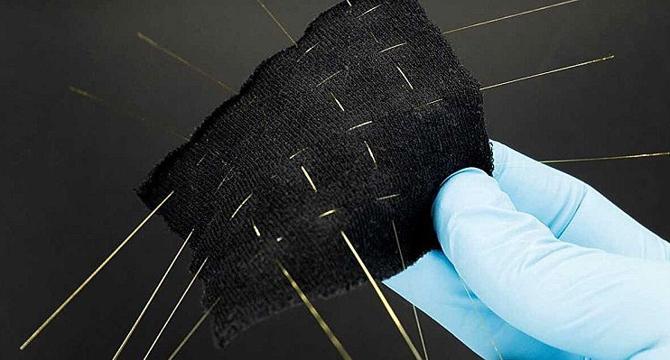
Image Credit: Knowridge
How your T-shirt could become your next fitness coach
- Researchers at ETH Zurich, led by Professor Daniel Ahmed, have developed SonoTextiles, innovative fabrics that use sound waves passed through glass fibers to detect movement, touch, and pressure.
- SonoTextiles offer more precise measurements, lighter and more breathable fabrics, and are easier to wash compared to traditional smart fabrics that use electronics.
- The integration of glass fibers into the fabric allows SonoTextiles to measure subtle movements, making them useful for health monitoring, sports training, sign language communication, posture correction, and more.
- While there are durability challenges with glass fibers, the research team is working on making the technology more robust and seamless for everyday clothing use, representing a significant advancement in smart clothing technology.
Read Full Article
26 Likes
Knowridge
320

Image Credit: Knowridge
3D-printed smart fabrics stay strong and flexible after washing
- Researchers at Washington State University have developed a method for 3D-printing smart fabrics that are durable and comfortable to wear.
- They used a special solution made of polybutylene succinate and carbon nanotubes to create flexible and conductive fabrics capable of sensing movement and transmitting data.
- The printed fabrics demonstrated durability, maintaining their strength, conductivity, and sensing abilities even after multiple cycles of washing, stretching, and relaxing.
- The use of a biodegradable solvent in the production process highlights the environmentally friendly approach taken by the researchers in advancing smart fabric technology.
Read Full Article
19 Likes
Medium
224

Image Credit: Medium
Smart Home on a Shoestring: Unlocking a World of Automation for Under $100
- The article discusses how affordable and accessible smart home automation has become, with a range of devices available for under $100 that offer convenience, security, and efficiency.
- It challenges the notion that smart home technology is only for the wealthy, highlighting the decreased prices and diverse options now within reach for a wider audience.
- Smart lighting, home security devices, and virtual assistants are mentioned as essential categories for creating a budget-friendly smart home setup.
- Smart bulbs, plugs, security cameras, and smart speakers all fall within the under $100 budget, providing significant benefits at an affordable price point.
- Basic smart thermostats under $100 offer remote control and scheduling features, enhancing convenience and potential energy savings for homeowners.
- The article emphasizes the importance of strategic purchasing and planning to build a cohesive smart home ecosystem without overspending.
- It encourages readers to embrace the smart home revolution by exploring the affordable gadgets available and experiencing the magic of home automation without financial strain.
- The future of smart living is presented as inclusive and accessible, inviting everyone to be part of the smart home movement without the need to invest thousands of dollars.
- Overall, the article promotes the idea that a smart home is no longer a luxury but a practical and achievable reality for anyone interested in enhancing their living space with modern technology.
- By selecting budget-friendly options and carefully planning their smart home setup, individuals can transform their homes into intelligent and responsive environments without exceeding their financial boundaries.
- In conclusion, the article encourages readers to start small, explore the affordable smart home options, and witness firsthand how these devices can revolutionize their daily routines and elevate their living experience.
Read Full Article
13 Likes
Knowridge
439
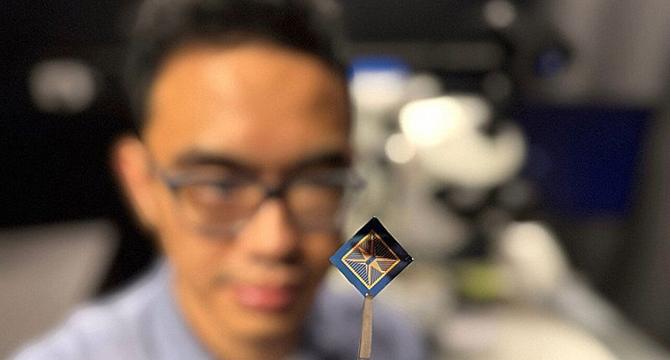
Image Credit: Knowridge
This mind-like device sees and remembers movements instantly
- Engineers at RMIT University have developed a tiny device that processes hand movements in real time, stores visual memories, and performs brain-like tasks independently.
- The breakthrough, based on neuromorphic technology mimicking human brain functions, enhances fields like robotics, autonomous vehicles, and human-machine interaction.
- The device uses molybdenum disulfide (MoS2) to capture light, detect changes in its environment instantly, and store memories efficiently without excessive data or energy consumption.
- This advancement could revolutionize visual tasks in technology, making operations faster, more energy-efficient, and could lead to enhanced capabilities in robots, autonomous vehicles, and various other applications.
Read Full Article
26 Likes
Medium
434
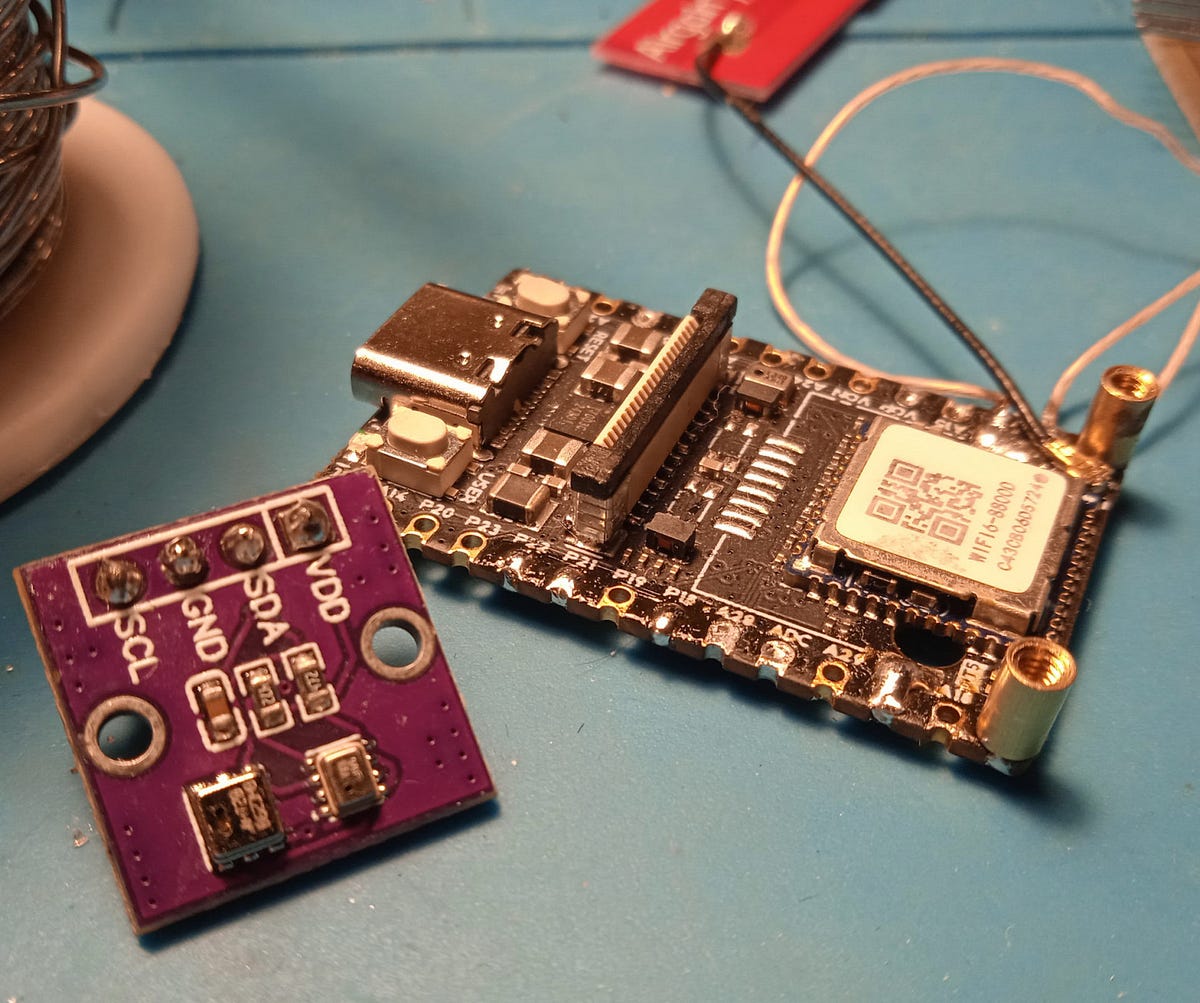
Image Credit: Medium
LicheeRV Nano — Board programming (Part 2)
- The LicheeRV Nano board programming in C/C++ utilizes a cross-compiler available for x86 Linux or a specialized Jupyter notebook for browser-based development.
- Compilation issues in examples using ioctl can be resolved by editing ioctl.h or through automatic patching in the Google Colab notebook.
- Configuration of pins for GPIO, UART, I2C, PWM, and SPI functions on the LicheeRV Nano board involves pin management via multiplexer selection and specific addresses.
- Settings for pin configurations can be done during board boot using U-Boot or via devmem utility from a running Linux OS for testing purposes.
- Controlling GPIO pins through the Linux GPIO sysfs interface allows for terminal interaction or programmatically from C code, as demonstrated in project examples.
- Similarly, interaction with PWM pins occurs through the sysfs interface, with functionalities like generating square waves and programmatically controlling PWM pins from code.
- Interrupt processing without full-fledged setup is exemplified using Linux API in handling GPIO interruptions effectively.
- Utilizing UART, I2C, and SPI interfaces on the board involves configuring the multiplexer to set up communication channels and interacting with respective devices through C/C++ code snippets.
- Examples provided cover UART data sending, SPI hardware interaction, and I2C devices like AHT20 and BMP280 for temperature and barometer readings.
- Experiments on I2C will be carried out with the WiFi module turned off, and future articles will involve working with a CSI camera connected to the board.
Read Full Article
26 Likes
TechJuice
155

AWS Unveils Ocelot Quantum Chip to Slash Error Correction Costs
- Amazon Web Services (AWS) has introduced Ocelot, their first quantum computing chip, aiming to reduce quantum error correction costs significantly.
- Ocelot features a unique architecture with cat-qubit error correction, leveraging superconducting tantalum oscillators for efficient quantum memory.
- Key technical features of Ocelot include native error correction, cat qubits with tantalum oscillators, stacked silicon microchips, and bosonic code realization.
- The announcement of AWS's Ocelot chip is notable for its hardware-level error correction and potential to accelerate the development of fault-tolerant quantum computers.
Read Full Article
9 Likes
Scientificworldinfo
201

Image Credit: Scientificworldinfo
Electrolysis Technology Advancements for Green Hydrogen Production
- Electrolysis technology advancements are crucial for expanding green hydrogen production, enhancing efficiency, cost-effectiveness, and sustainability.
- Advancements in electrolysis technologies are reshaping the green hydrogen landscape, addressing technical and economic barriers for widespread adoption.
- Electrolysis is integral to green hydrogen production by converting renewable electricity into a carbon-free fuel carrier through water splitting.
- Key electrolysis technologies include Alkaline Water Electrolysis (AWE), Proton Exchange Membrane (PEM) Electrolysis, Anion Exchange Membrane (AEM) Electrolysis, and Solid Oxide Electrolysis Cells (SOEC).
- Efficiency and scalability play critical roles in hydrogen production, impacting operational costs, manufacturing capacity, and renewable energy integration.
- Real-world applications of electrolysis technology span green ammonia production, green steel manufacturing, power-to-gas grid injection, fuel cell mobility, and synthetic e-fuels production.
- Commercial deployment and market trends show a significant increase in electrolyser manufacturing capacity, with notable contributions from regions like China, Europe, and North America.
- Global scale-up efforts aim to meet rising demand for green hydrogen, with partnerships between OEMs and renewable developers driving commercialization and cost-effective systems.
- Technical and commercial challenges in green hydrogen electrolysis include material constraints, system integration, grid flexibility, high upfront costs, policy uncertainty, and immature demand-side infrastructure.
- Future developments in electrolysis technology are expected to focus on cost reduction, efficiency improvement, material innovation, system optimization, and scale-up integration to achieve Net-Zero Emissions goals by 2030 and beyond.
Read Full Article
12 Likes
Livescience
164
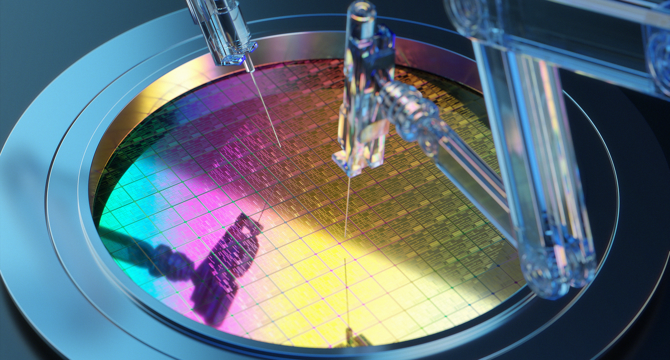
Image Credit: Livescience
What is Moore’s Law and does this decades-old computing prophecy still hold true?
- Moore's Law was formulated by Gordon Moore in 1965 based on the doubling of transistors on a chip annually, with his prediction holding true for many years.
- Initially, Moore predicted 60 thousand components on a chip by 1975, which set the pace for technological advancements in the semiconductor industry.
- Chip designers, notably at Intel, used Moore's Law as a target, leading to innovations like the 4004 microprocessor and subsequent processors following the law.
- Advancements in material science and manufacturing processes played a crucial role in maintaining the progression aligned with Moore's prediction.
- The evolution from planar to FinFET processors revitalized Moore's Law, enabling the packing of billions of transistors on chips.
- The approach of miniaturization faces challenges due to reaching atomic levels, necessitating a shift towards more sophisticated processors with multiple cores.
- While Moore's Law no longer strictly applies in doubling transistor counts every two years, it continues to drive the industry's pursuit of faster, more capable technology.
- The integration of technologies like neural processing units (NPUs) and advancements in AI indicate the evolving landscape beyond Moore's Law.
- Despite the challenges posed by physical limitations, the trajectory set by Moore's Law continues to inspire innovation and progress in the tech sector.
- Companies are leveraging the spirit of Moore's Law to push boundaries and develop cutting-edge technologies, with potential for further breakthroughs in the future.
Read Full Article
9 Likes
TechJuice
178
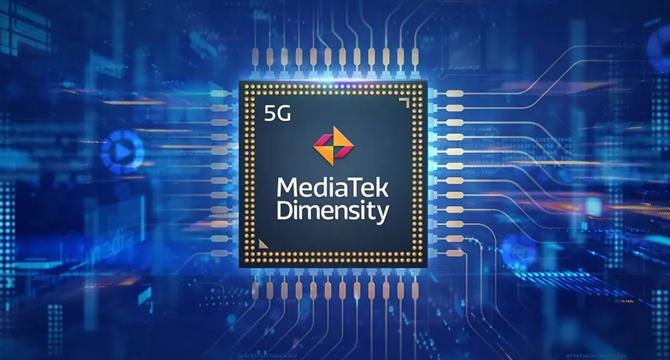
Image Credit: TechJuice
Revolutionary Chipset Aims to Lower the Price of Flagship Phones
- MediaTek unveiled the Dimensity 9400e, a sub-premium variant of their flagship 9400 chipset, designed for high-end gaming and camera-centric smartphones.
- The Dimensity 9400e features an All Big Core CPU design with Cortex-X4 prime core, Cortex-X4 cores, and Cortex-A720 cores, offering reduced memory support and maintaining flagship-class responsiveness.
- The chipset comes with a 12-core Immortalis-G720 GPU for hardware-accelerated ray tracing, imaging enhancements with an 18-bit RAW ISP, and AI capabilities using MediaTek's APU-790 neural engine.
- Connectivity-wise, the Dimensity 9400e supports Wi-Fi 7, Bluetooth 6.0, sub-6 GHz 5G, and high-resolution display outputs, with early device adoptions anticipated in devices from OnePlus, Realme, and Vivo.
Read Full Article
10 Likes
For uninterrupted reading, download the app